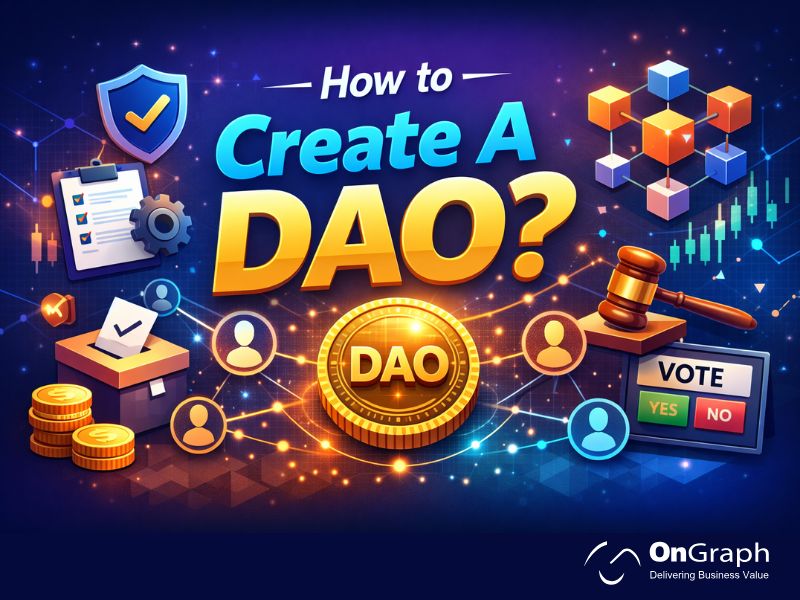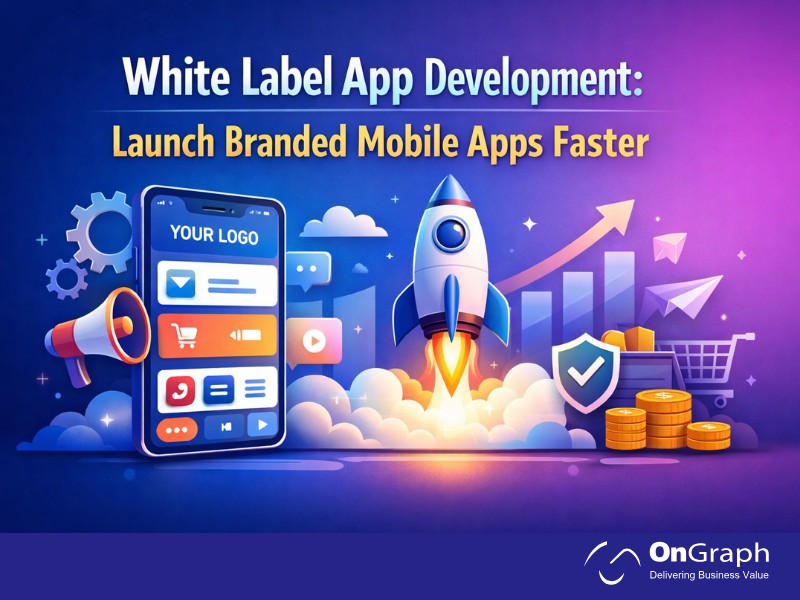In this article
- Why LATAM is Ripe for Taxi App Development
- Core Features to Include in Your Taxi App for LATAM
- Localization: Language & Payment
- Technology Stack to Build a Taxi App in Mexico or LATAM
- How Much Does It Cost to Build a Localized Taxi App in LATAM?
- Go-To-Market Strategy: Launching Your Taxi App in LATAM
- Why Choose OnGraph as Your Taxi App Development Company?
- Final Thoughts
The Latin American (LATAM) region is witnessing a digital revolution in transportation. With increasing urbanization, smartphone penetration, and demand for safe, efficient travel, now is the perfect time to Launch a Localized Taxi App in LATAM countries or Mexico. Whether you’re a transport business owner or an aspiring startup founder, launching a ride-hailing app for LATAM can be both impactful and profitable—if done right.
In this blog, we’ll break down everything you need to launch a successful, localized taxi app for the LATAM region, including:
- Key market insights
- Core and custom features
- Language & payment localization
- Tech stack and pricing
- Launch strategies and more
Why LATAM is Ripe for Taxi App Development?
The success of Uber, DiDi, and local players like Beat and Cabify has shown that LATAM is a booming market for taxi apps. However, gaps still remain in affordability, localization, and trust—especially in smaller cities and suburban regions.
Key stats that matter:
- Over 80% smartphone penetration in urban LATAM zones
- 65% of taxis in Mexico City still operate manually
- Most LATAM riders prefer apps available in both Spanish and English
- Lack of affordable, customizable platforms for small operators
This is where launching a Spanish-English taxi app for a local audience gives you a distinct edge.
Core Features to Include in Your Taxi App for LATAM
When choosing a Taxi App Development Company, it’s essential to understand what features you need to offer—both for passengers and drivers.
Passenger App Features
- Ride Booking & Real-time GPS Tracking
- Fare Estimation
- Promo Code & Discounts
- In-app Wallet or Card Payment (Stripe, local gateways)
- Language Toggle: Spanish ↔ English
- Light/Dark Mode
- Rating & Review Drivers
- Emergency SOS Button
Driver App Features
- Accept/Reject Rides
- Navigation Support (Google Maps, Waze integration)
- Daily Earnings Summary
- Driver Subscriptions
- Stripe Dashboard (or local alternative)
- Push Notifications
- Referral Incentives
Localization: Language & Payment
Launching in LATAM means localizing your platform beyond just translation. Here are two essential layers of localization:
1. Spanish-English Toggle
Offer your users the option to choose between Spanish and English, right from onboarding. You can build this via a language toggle switch and manage translations using i18n frameworks (like Flutter’s built-in localization tool). You may use Google Translate APIs during MVP but later hire native translators for accuracy.
2. Payment Gateways That Work in LATAM
While Stripe is a popular global option, local payment solutions like MercadoPago, NationalBankCard, or Openpay offer:
- Lower transaction fees
- Faster settlement in local currencies
- Easier KYC processes
Integrating driver subscription plans or enabling in-app wallets can also help monetize the app smartly.
Technology Stack to Build a Taxi App in Mexico or LATAM
If you’re looking for rapid development, smooth UI, and affordability, we recommend the following stack:
Frontend:
- Flutter (Cross-platform development for iOS & Android from a single codebase)
Backend:
- Node.js (Scalable server framework)
- Firebase or MongoDB (For real-time data and notifications)
APIs:
- Google Maps or Waze (for navigation)
- Stripe / MercadoPago / NationalBankCard
- Twilio / Firebase (for OTP and push alerts)
Partnering with an experienced Taxi App Development Company that understands the LATAM market ensures you get a scalable, performance-ready solution without overpaying.
How Much Does It Cost to Build a Localized Taxi App in LATAM?
The cost to launch a localized taxi App in LATAM varies based on features and customizations. Here’s a rough breakdown:
| Scope | Estimated Cost (USD) |
| MVP with Basic Features | $4,000 – $6,000 |
| Advanced Features (referral, driver subscription, bilingual, dark mode) | $6,000 – $8,000 |
| Custom Payment Gateway Integration | +$300 – $500 |
| Landing Page for Driver Registration | $300 – $600 |
This includes:
- Android + iOS support via Flutter
- Admin dashboard
- One-month free maintenance
- Source code ownership
You can start lean and scale up as traction builds.
Go-To-Market Strategy: Launching Your Taxi App in LATAM
Here’s how to launch smart and win early adoption:
1. Driver Acquisition First
Set up a landing page to onboard drivers before launching the rider app. This ensures supply-side readiness.
2. Local Promotions & Word of Mouth
Use local influencers, Facebook groups, and WhatsApp community marketing to get attention in your target area.
3. Referral Bonuses
Offer riders $5 and drivers $100 for every successful referral to encourage organic growth.
4. Launch in a City, Not a Country
Start in one city—like Puebla, Monterrey, or Medellín. Test, refine, and scale city by city.
5. Keep Customer Support Bilingual
Offer email or chat support in both Spanish and English to build trust with users.
Why Choose OnGraph as Your Taxi App Development Company?
At OnGraph Technologies, we’ve helped dozens of clients worldwide launch ride-hailing apps—customized for their region, business model, and budget.
With us, you get:
- Full source code ownership
- Fast launch timelines (as little as 4–6 weeks)
- Custom features like referral programs, Waze integration, dark/light mode
- Multilingual and multi-currency support
- Optional AI integrations like WhatsApp taxi booking or price surge logic
Check out our portfolio or request a free consultation to get started.
Final Thoughts
The ride-hailing opportunity in LATAM is still wide open. If you can offer a localized, bilingual, affordable taxi app, you stand a real chance to disrupt the market—especially in tier-2 and tier-3 cities.
With the right technology, the right features, and the right development partner, your dream of building the next Uber-for-LATAM is just a few weeks away from becoming reality.
Ready to build your Spanish-English taxi app? Contact OnGraph Technologies to discuss your idea and get a tailored quote today.
FAQs
The cost to build a taxi app in Latin America typically ranges from $4,000 to $8,000, depending on features, design complexity, and the development company you choose. For a localized app with Spanish-English language support, referral system, driver subscription model, and payment gateway integration (like Stripe or MercadoPago), the cost is usually around $5,300 to $6,000. Adding AI features or a custom payment gateway may increase the cost slightly.
Yes, absolutely. A Spanish-English taxi app is essential for success in the LATAM region, where users often prefer apps in their native language. Developers implement a language toggle that allows users to select between Spanish and English. You can start with auto-translation APIs like Google Translate and later refine the text with native speakers for better UX.
The most essential features to include in a taxi app for Mexico or Latin America are:
- Language selection (Spanish/English)
- Waze/Google Maps integration
- Fare estimation and rate cards
- Driver subscription system
- Promo codes and referral bonuses
- Payment via Stripe or local gateways
- Light and dark themes
- Driver and rider review systems
Customizing for local payment behavior and user expectations is key.
While Stripe is globally used, many Latin American clients prefer alternatives like:
- MercadoPago (widely adopted in LATAM)
- NationalBankCard (lower transaction fees)
- Openpay (popular in Mexico)
The best payment gateway depends on your location, business structure, and transaction volume. Integration with custom gateways may incur additional development costs if they’re not pre-built into your platform.
If you’re using a pre-built white-label solution customized for your needs, you can launch your ride-hailing app in 4–6 weeks. The process includes:
- Gathering requirements
- UI/UX customization
- Language & payment setup
- Testing on Android and iOS
- Admin panel configuration
A landing page for driver registrations can be launched in a few days to start early onboarding.
Yes, you can compete with big players like Uber and DiDi by offering hyper-local services and features tailored to your audience. Focus areas include:
- Lower pricing or better commission splits
- Local promotions and referrals
- Bilingual support
- Better driver onboarding and payout cycles
- Features that matter locally (e.g., dark mode, promo codes)
Local players often win customer trust faster with strong service and community presence.
You can create a landing page or mini-site to collect driver registrations before the app goes live. This page should include:
- A simple registration form (name, email, ID, license, city)
- App info or short demo video
- Benefits for early driver partners
- Referral bonus program
- Language support (Spanish/English)
This allows you to launch with a ready supply of drivers and ensures smoother operations from day one.
About the Author
Let’s Create Something Great Together!
Latest Blog
















